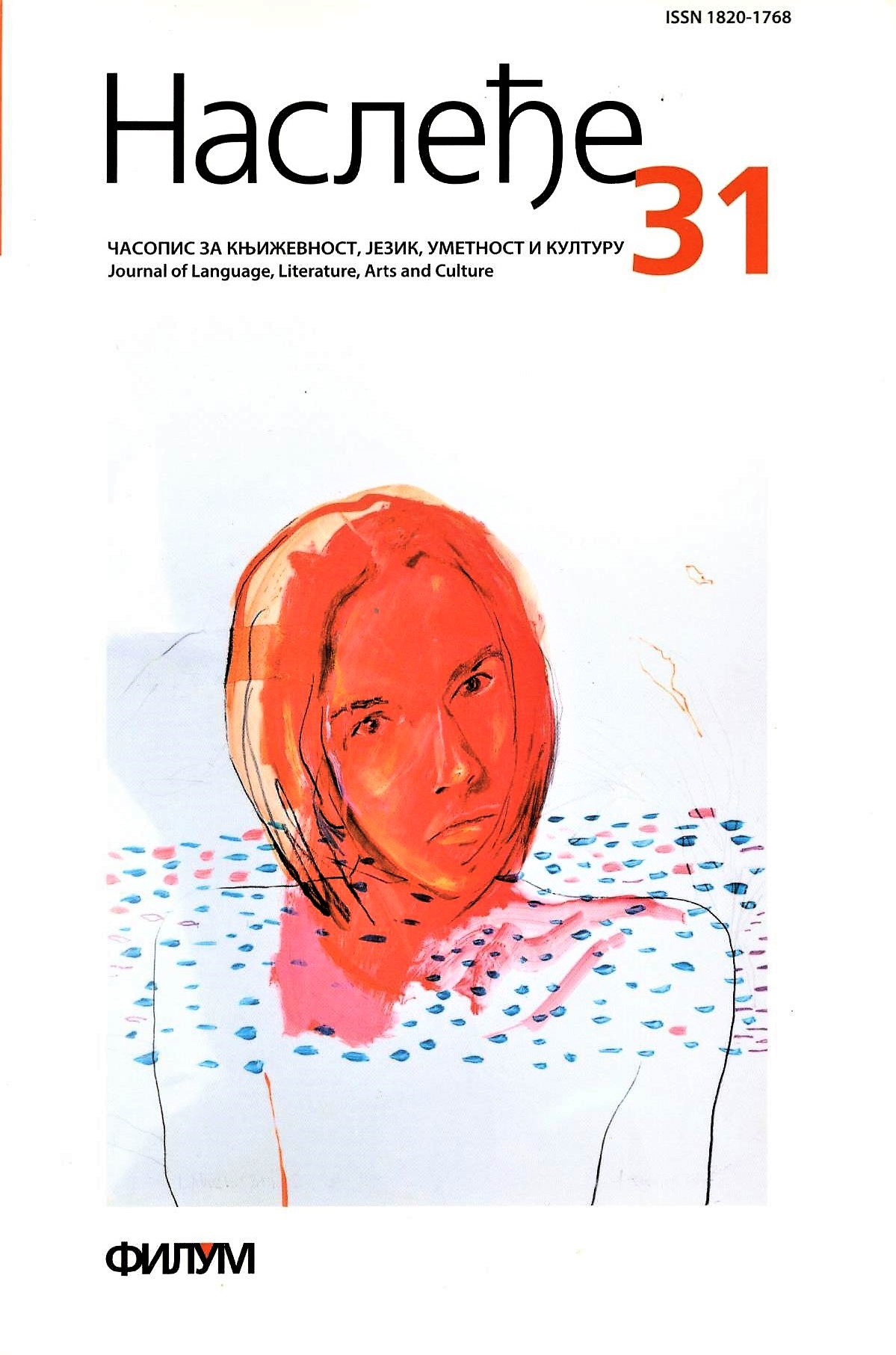СТОТИНУ РАНИХ ЈАДА
ПРИСУСТВО ФИГУРЕ АУТОРА У ПРИЧАМА КИША И КУСТУРИЦЕ
Кључне речи:
аутор, приповедач, јунак, прича, детињство, Киш, КустурицаСажетак
Идентификовање фигуре аутора у књижевном делу усмерено је према оним местима унутар прозне форме која сведоче о томе да писац, посредством самог текста, читаоцу шаље извесне сигнале препознатљивости свог естетског, и сваког другог идентитета. Односом фигуре аутора према предмету прозне творевине, посебно у свету модерне књижевности, по правилу, дефинисан је читав комплекс књижевнотеоријских питања. уколико је прозни јунак, као што то обично бива, у исти мах и главни протагониста приповедања, то нас приближава и ауторовом погледу на свет, односно фигури аутора. Избор типа наративног текста подразумева избор типа јунака, избор типа приче, избор типа говора и избор типа стила. Све треба да буде подређено целини. Овај рад имао је циљ да размотри присуство фигуре аутора у збиркама прича „Рани јади” Данила Киша и „Сто јада” Емира Кустурице. истраживање применом плурализма метода било је нужно. Постављеном проблему приступили смо из перспективе парадигме, односно, основног обрасца који се јавља у више примера. Закључено је да су ова два писца свој наративни текст засновали превасходно на причи са динамичким мотивима и аутобиографским елементима из детињства. Приче су означене субјективним доживљајем и сећањем на поједине епизоде и ситуације из живота које су искрено и аутентично описане. акценат је стављен на делујућег јунака. Главни јунаци Андреас Сам и Алекса Калем сведоци су свих збивања и као наратори казују своја сећања у првом или трећем лицу једнине. Они представљају фигуру аутора.
Референце
Bahtin 1991: M. Bahtin, Autor i junak u estetskoj aktivnosti, Novi Sad: Svetovi. [orig.]
Бахтин 1991: М. Бахтин, аутор и јунак у естетској активности, Нови Сад: Светови.
Bart 1979: R. Bart, Književnost, mitologija, semiologija, Beograd: Nolit. [orig.] Барт, 1979: р. Барт, Књижевност, митологија, семиолгија, Београд: Нолит.
Četmen 1978: S. Četmen, Priča i diskurs: natarivne strukture u fikciji i filmu, Ithaca and London: Cornell University Press. [orig.] четмен 1978: С. Четмен, Прича и дискурс: наративне структуре у фикцији и филму, Итака и Лондон: Корнел универзитет Прес.
Eko 1965: U. Eko, Otvoreno djelo, Sarajevo: Veselin Masleša. [orig.] Еко 1965: у. Еко, Отворено дјело, Сарајево: Веселин Маслеша.
Ingarden 1971: R. Ingarden, O saznavanju književnog umetničkog dela, Beograd: SKZ. [orig.] Ингарден 1971: р. Ингарден, О сазнавању књижевног уметничког дела, Београд: СКЗ.
Kajzer 1973: V. Kajzer, Jezičko umetničko delo, Beograd: SKZ. [orig.] Кајзер 1973: в. Кајзер, Језичко уметничко дело, Београд: СКЗ.
Kiš 1998: D. Kiš, Rani jadi, Beograd: Knjiga-komerc. [orig.] Киш 1998: Д. Киш, Рани јади, Београд: Књига-комерц.
Kusturica 2013: E. Kusturica, Sto jada, Beograd: Novosti. [orig.] Кустурица 2013: Е. Кустурица, Сто јада, Београд: Новости.
Lotman 1976: J. Lotman, Struktura umetničkog teksta, Beograd: Nolit. [orig.] Лотман 1976: Ј. Лотман, Структура уметничког текста, Београд: Нолит.
Prop 1982: V. Prop, Morfologija bajke, Beograd: Prosveta. [orig.] Проп 1982: В. Проп, Морфологија бајке, Београд: Просвета.
Radisavljević 2013: Z. Radisavljević, Zašto Braca Kalem obožava Sibir, „Politika”, četvrtak, 19. septembar 2013. [orig.] Радисављевић 2013: З. Радисављевић, Зашто Браца Калем обожава Сибир, „Политика”, четвртак, 19. септембар 2013.






